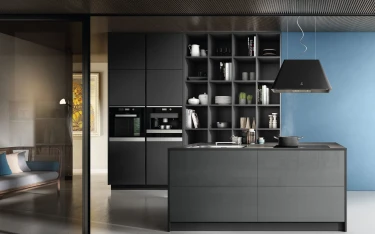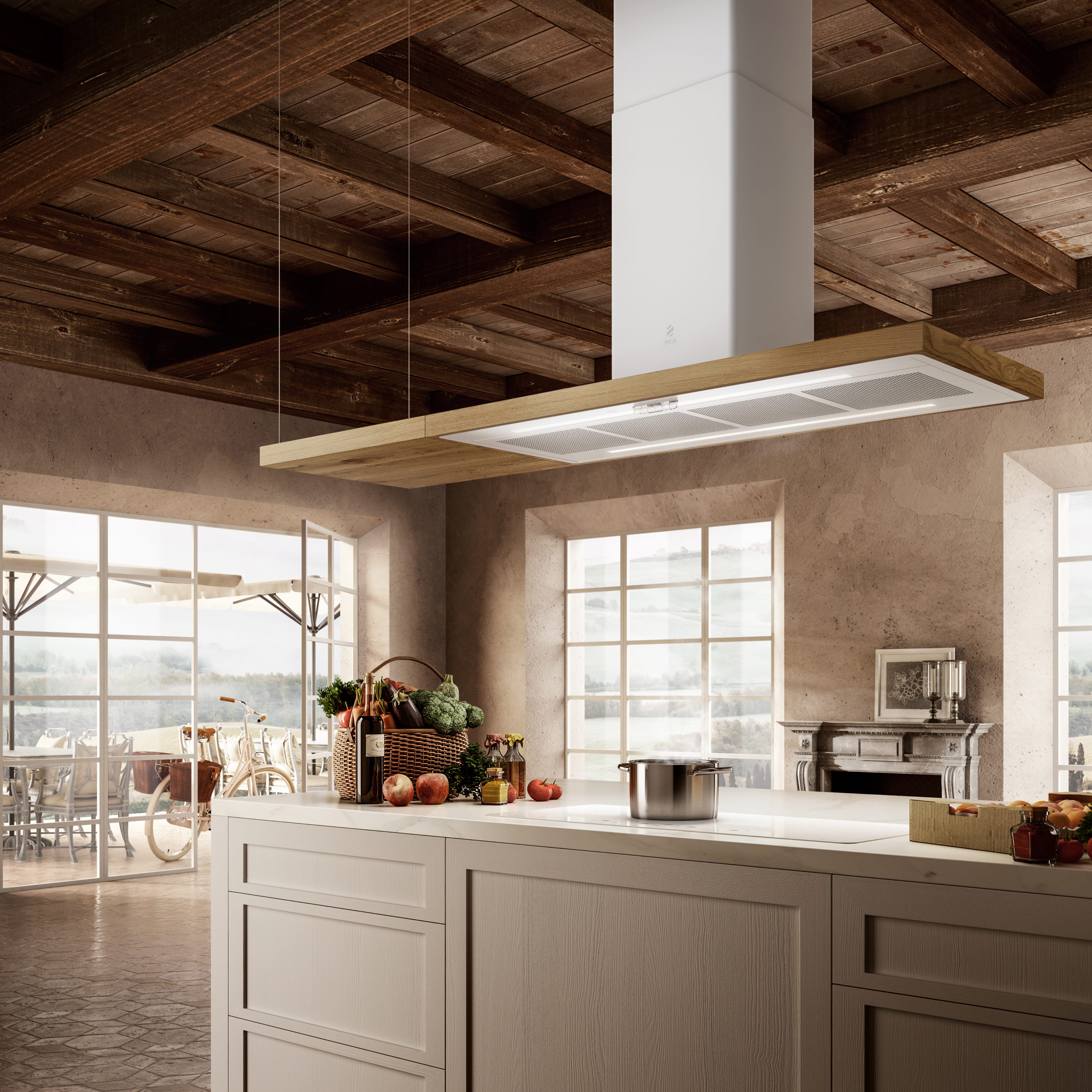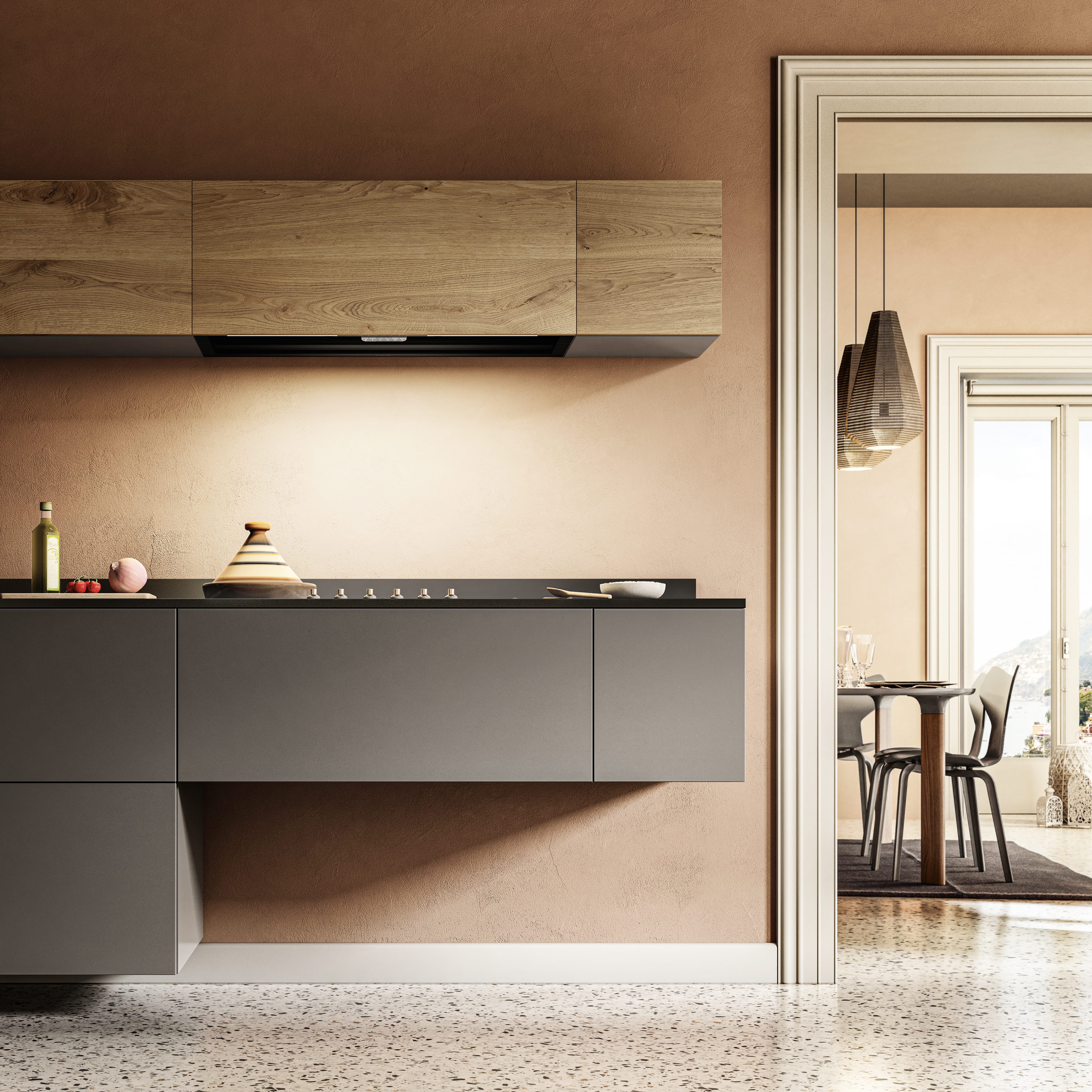
Hood energy efficiency: what you need to know
The need to develop increasingly environmentally friendly, technological solutions, has brought the appliance industry to evaluate their products (from this viewpoint). Energy efficiency class is the means with which household appliances of all kinds are rated on the basis of their ability to consume less energy.
The energy efficiency class is essential to introduce a product benchmark in the household appliance market, that considers the energy efficiency of its technology. Kitchen hoods, being appliances in all respects, fall into the energy class product category. But how can we actually evaluate hood energy efficiency? Here are some tips to find out all information about the energy efficiency class of your kitchen hood.
Hood energy class: how does it work?
Kitchen hoods are household appliances in all respects, often also characterized by a moderate power absorption: the extraction system is based on the fan movement inside the extraction duct, that requires electrical power in order to function. But that’s not all: even though their impact is limited, also the auxiliary systems integrated into the hood require a certain amount of electricity, such as lighting, internal sensors and any IoT integration systems for the most innovative models.
Hood energy class: rating
As a result of ever-growing environmental needs, the European Union decided to introduce an energy class rating for household appliances in 1992, to make different technologies and instruments comparable in terms of energy efficiency.
Energy classes follow a letter-based rating and “plus signs” to indicate higher energy performance: A+++ means the best possible technology in terms of energy efficiency according to European standards, while energy performance goes down to the letter G.
The rating considers a set of factors:
-
Fluid dynamic efficiency
-
Lighting energy efficiency
-
Filter efficiency
-
Noise level
It should be noted that standards are continuously updated and reviewed, following the development of increasingly efficient technologies. This means that a Class A appliance of 5 years ago, may easily be Class C or less today: the rating therefore continuously forces manufacturers to constantly commit to reducing the consumption of their products. The rating is generally accompanied by labels that specify the most relevant technical data of the appliance, such as absorbed energy, noise level and other information that may help in the comparison of different technologies and products.
Kitchen hoods must be rated just like any other household appliance.
Elica offers many kitchen hood and extractor hobs models of class A rating or higher, that meet various installation needs and architectural layout:
-
IKONA MAXXI PURE is a suspended hood with an integrated air purifier with very high extraction rate (up to 600 cubic meters per hour) and very low noise level (62 dB at maximum extraction speed).
-
BIO, the hood that can be either wall or island mounted, that thanks to its A+ rating, ensures top performance in terms of extraction, silence and filtering efficiency.
-
RULES, the head- free hood that offers maximum installation flexibility and high extraction performance.
-
THE NIKOLATESLA LINE, the line of extractor hobs that combines high cooking performance, extraction and sophisticated shapes.
Household energy efficiency
Another current topic is thermal management of modern constructions. Buildings of higher energy classes must guarantee efficient heating, but most of all adequate heat insulation of indoor spaces to prevent unwanted heat loss outside. This is why the hood plays such an important role: extracting air from inside a space, such as a kitchen preheated by the building heating system, and conveying it outside can put the energy efficiency of the structure strongly at risk, since part of the heated air of the room is wasted.
As extraction of treated air by the a/c system is a current problem, for new buildings with high energy efficiency, it is highly recommended to install filtering hoods.


